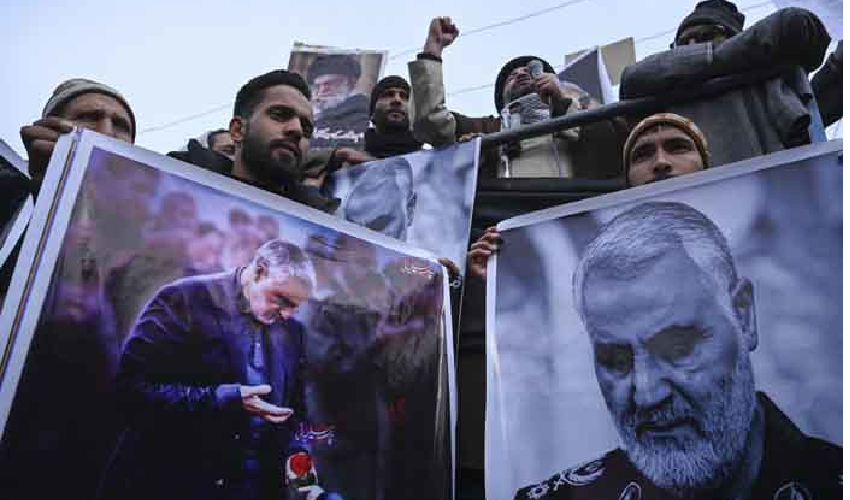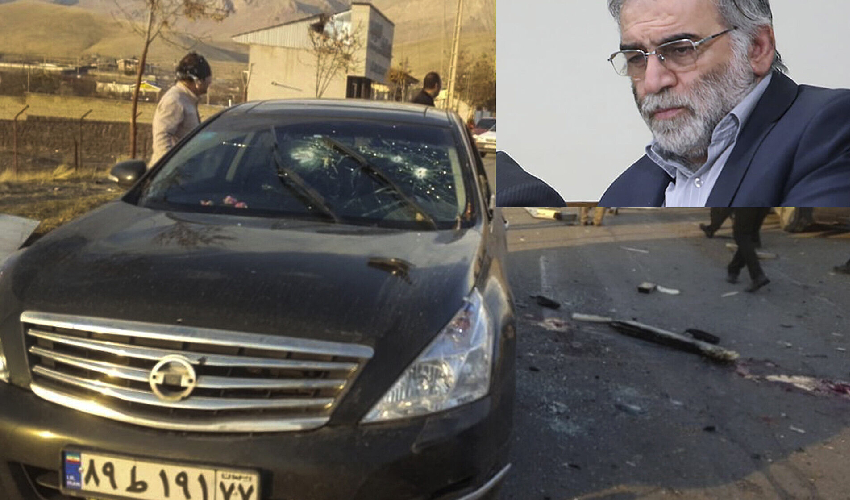
In Iran, the political system differs from others. The ayatollah plays a key role in determining the country’s fate. Iran's focus is on nuclear armament and expanding its regional influence. Two influential figures, Fakhrizadeh and Soleimani, were responsible for these policies
In Iran, the political system works differently from other countries. The head of state is not that important, with the ayatollah,a major religious leader, playing a pivotal role in determining the country’s fate. Although ayatollah’s position is primarily religious, it also plays a central role in politics. Currently, Ayatollah Khamenei has the authority to choose state cadres from people close to him. He also wields influence over the eligibility of individuals to participate in presidential elections.
A covert war is under way involving the U.S., Israel, and Iran, known as a proxy war, wherein countries engage in conflicts taking place far from their own territories. In this ongoing conflict, individuals closely associated with Khamenei are being assassinated one by one.
Iran has two important policies: Nuclear armament and increasing its sphere of control in the region. The responsibility for executing these policies fell upon two influential figures: Mohsen Fakhrizadeh and Qasem Soleimani.
Soleimani was the commander of the Revolutionary Guard, a key role within Iran. Similar to Fakhrizadeh, he was recognized as one of Khamenei’s closest point men.
Fakhrizadeh is known as the architect behind Iran's plans to become a nuclear power. In addition to his scientific contributions, he played a pivotal role in formulating the country's uranium enrichment strategies. Western intelligence agencies have described Fakhrizadeh as, "the father of Iran's military nuclear program."
Fakhrizadeh was the only Iranian scientist mentioned by Israel’s Prime Minister Benjamin Netanyahu in his May 2018 presentation on the Iranian nuclear program.
Soleimani was seen as the mastermind behind Iran's regime changes in Yemen, Syria, Lebanon and Iraq. In the eyes of the people of Iran, Soleimani was considered a legend for increasing the country’s sphere of influence in the Middle East.
He was killed in a drone attack on his convoy as he was returning to Iran by plane on January 3 after meeting with government officials in Iraq. In response, Iran declared a period of national mourning and issued a stern warning that the assassination would not go unanswered. Perhaps it was the absence of retaliation that led to the termination of yet another prominent figure.
Soleimani, the man behind Iran's policies in the region, had been assassinated. Fakhrizadeh, the man behind Iran's nuclear plans, was next. The decision to assassinate Fakhrizadeh was taken after Israel’s intelligence agency, Mossad, seized documents during an operation in Iran in 2018, that identified him as the main figure behind the nuclear program. A nuclear-armed Iran would mean an irreversible shift in power in the region.
Israel has carried out many attacks against Iran in this regard. It has hacked nuclear facilities and sabotaged nuclear talks between the U.S. and Iran.
These assassinations were carried out using highly sophisticated methods. Assasinating these men, who were under constant protection was not an easy task.

Fakhrizadeh, an insider in Iran, enjoyed constant protection from Iranian intelligence. The Mossad trailed him for eight months, waiting for just the right moment to carry out the kill.
The assassination plot was set in motion in March 2020, with the dispatch of a group of Israeli agents to collaborate with local counterparts in Iran. A team consisting of over 20 agents comprising of both Israelis and Iranians, was assembled to monitor Fakhrizadeh’s movements. He was killed on a Friday on his way to his villa in eastern Tehran. His route, speed, time and even the doors he used were known, as a remote-controlled weapon with an integrated bomb to destroy evidence was placed on this route.
The weapon, weighing a ton including explosives, was smuggled into Iran piece by piece. Assembled in a pickup truck parked on the side of the road, the weapon was remotely fired by agents following Fakhrizadeh as he approached.

Fakhrizadeh was killed by 13 bullets, while the Mossad team detonated the weapon with an integrated bomb and fled the scene. All of the agents managed to leave Iran, according to a newspaper source.
Finally, with the killing of Razi Mousavi, one of Iran's most important commanders in Syria, important figures close to the Ayatollah have also been taken out, one at a time.
As Khamenei becomes increasingly isolated in Iran, it seems highly likely that these assassinations will continue.
#video#